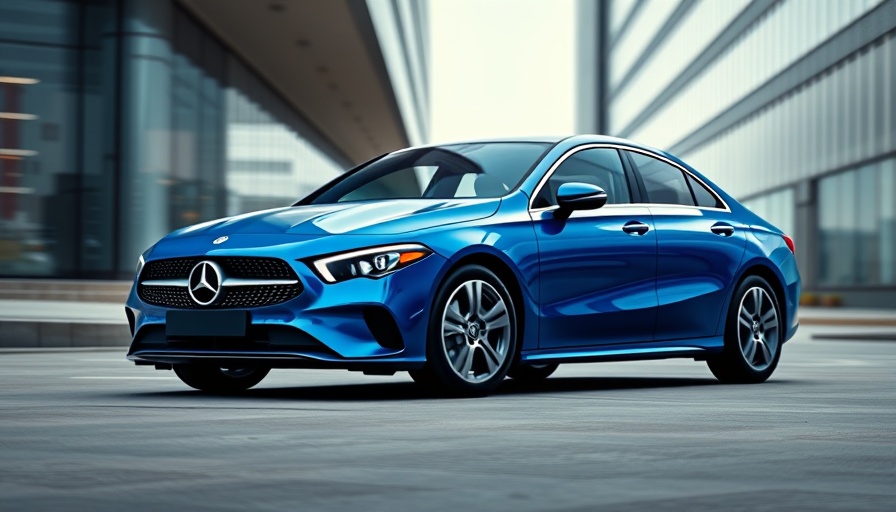
The Evolution of Mercedes-Benz: A New Era with the 2026 CLA
Mercedes-Benz has long been a household name in the luxury automotive world, known for blending performance with style. Entering the electric vehicle (EV) market heavily around 2020, Mercedes made a commitment to sustainability, but not without facing its share of challenges and stiff competition. With the 2026 Mercedes-Benz CLA, however, there is a sense that the brand is back on solid footing.
Why the 2026 CLA Stands Out from Previous Generations
One of the most striking changes for the 2026 model is its aesthetic. Previous generations of the CLA often received critiques for looking cartoonish, but this latest iteration reflects a more streamlined and modern design. The intention was to combine the sporty attributes of a coupe with the practicality of a sedan. According to early reviews, it successfully captures that vision while also integrating elements of the classic CLS model, which paved the way for four-door coupes.
Electric Performance: Raises the Bar for the Segment
For the 2026 CLA, the focus is on enhancing efficiency and providing an inviting driving experience. Reviewers have noted that the performance metrics of this electric sedan not only stack up against traditional competitors but also match newer entries in the EV space. With a competitive range and improved charging performance, the CLA positions itself well among its rivals, marking a substantial step forward for Mercedes in the electrification journey.
Technological Advancements that Impress
Technology is at the forefront of the CLA’s appeal. The new car comes loaded with a suite of advanced tech features that elevate the driving experience. The infotainment system has received particular praise for its user-friendliness and the smart integration of various functionalities, making it easy for drivers to stay connected while on the road. Reviews highlight that this integration plays a crucial role in enhancing the overall appeal of the CLA, especially to younger consumers who value tech-savvy vehicles.
The Competitive Landscape: A Changing Market
As Mercedes repositions itself within the EV segment, it faces competition from brands like Tesla, BMW, and Hyundai, each of which has made significant advancements in EV technology. For instance, while Tesla models have been lauded for their superior energy efficiency, the 2026 CLA aims to blend performance with practicality. A major shift in consumer preferences toward affordable yet well-performing EVs has shaped recent market dynamics and will influence the vehicle’s success.
Common Misconceptions About Make and Model
One common misconception that potential buyers might hold is that German engineering only pertains to performance and luxury without the necessary focus on sustainability. The CLA counters this notion with its sustainability initiatives, advanced safety features, and a vision for a greener future. Addressing these misconceptions is important for the brand to attract a diverse clientele and establish itself firmly within the growing EV market.
A Look Ahead: Future Predictions and Trends
Looking further ahead, it appears the automotive industry is at a pivotal moment. Many experts forecast a continual shift towards electric vehicles. Mercedes will need to remain agile, adapting its offerings based on consumer feedback and technological advancements in the sector. Enhanced electrification strategies and new models will likely redefine the luxury car segment in the coming years.
In conclusion, the 2026 Mercedes-Benz CLA not only marks a new chapter for the model but potentially reshapes the luxury EV market itself. As consumers increasingly gravitate towards sustainable choices, brands that innovate while upholding high standards of performance will lead the way. For anyone considering their next vehicle, now might be the right time to explore the exciting developments in the automotive landscape. Stay informed about the latest trends and technological advancements that can influence your buying decisions.
 Add Row
Add Row  Add
Add 




Write A Comment